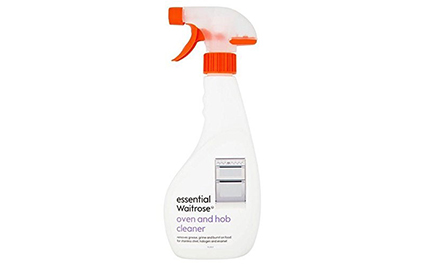
Photo credit: Essential Waitrose – Waitrose & partners
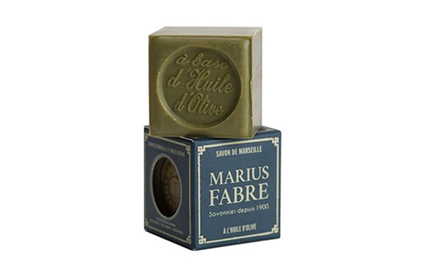
Photo credit:? Marius Fabre, www.marius-fabre.com

Cleaning products are no longer tucked away in the back of a cupboard. They’re now part of the overall decor in the four corners of the world. Products used to wash dishes and clean floors and windows are increasingly attractive. Beyond form, today’s cleaning product aims to be natural and genuine. It tells a story of the past while respecting nature, to preserve our future.
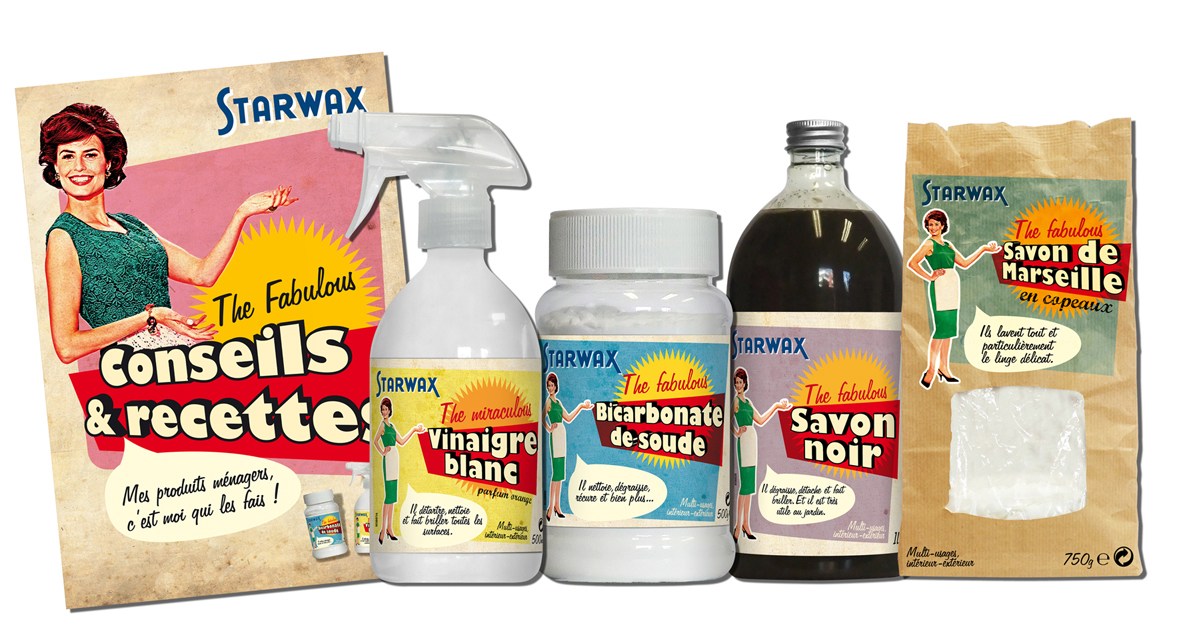
Photo credit: Starwax The Fabulous
The return to the past, to the origins, has become an added value for consumers. Brands with a history exhibit their heritage as a valuable asset; those without, invent one.
Packaging hence plays the role of Proust’s famous madeleine: colors, graphics and lettering are there to recall the past, either lived or dreamed. The package tells its own special story, and with style. A style that boldly breaks with the world of today, recycling the imagery of yesterday and combining it with up-to-date graphics. It’s the new vintage.
The inspiration comes from the look made popular during the post-war boom, with vintage color labels recalling the homemaker from the 1950s or even a more distant 19th century past. The French brand Starwax is a typical example. It is one of those brands that stand out due to packaging that proudly showcases time-honored capabilities. Wherever you are in the world, vintage labeling is present in every shop display. Amber-colored bottles, old-style labels, sometimes even with age spots – the packaging gives cleaning products the air of a vintage find at an open-air market.
If the container should tell a story, then the content’s not far behind. Grandmother’s recipes are lovingly recalled. Soft soap or Marseille soap, household vinegar, sodium bicarbonate or even diatomite or fuller’s earth and Meudon whiting are all ingredients from the past that have made a strong comeback in contemporary cleaning products sold around the world.
We have witnessed a veritable return to tradition; products are more genuine, with proven effectiveness in the past. Even sponges have followed the trend and may now be a blend of wood pulp, linen and cotton, a traditional recipe once again taking center stage.
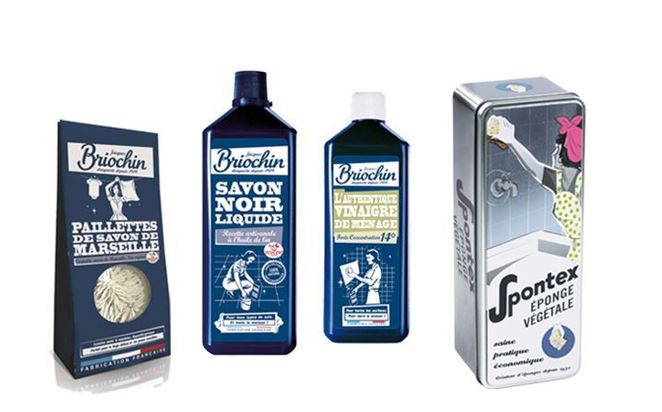
Photo credit:? Jacques Briochin, www.lebriochin.com + Spontex
Concern about the environment is one reason the past is so much in vogue. Longstanding tradition provides assurance to consumers seeking more eco-friendly household products, which must perform but also respect the planet. Soft soap, for instance, is a natural product free of parabens and solvents. It boasts of a reputation of effectiveness and can be used for everything, from floors to sinks as well as bathrooms. Essential oils are also found in the compositions, ideal natural ingredients that convey the image of a product good for health as well as the environment.
For a long time, detergents were viewed as being toxic or corrosive, but nowadays some are plant-based as a substitute. For example, the totally natural powdered laundry soda of the Canadian brand Nellie’s appeals to many consumers with heightened environmental awareness. These new biodegradable, non-toxic, hypoallergenic and GM-free chemical compositions have found their place on supermarket shelves around the globe and, of course, are just as effective.
As for the packaging, it must be recyclable, biodegradable and refillable. Plastic is giving way to glass, kraft cardboard or even metal. No matter what the product, the package should highlight that ecological commitment via appropriate graphics and lively natural colors.
While certain niche beauty products emerged in the wake of environmental problems, some large cosmetic groups such as Unilever and its eco-friendly Love Beauty and Planet brand have also surfed that trend. Such is likewise the case of the eco-efficient brands marketed by the Henkel group, such as Le Chat natural laundry detergent.
“ To compensate for their low standing, cleaning products have transformed by combining our past and our future, with a view to preserving both while telling a beautiful story. The packaging becomes the messenger. There are no more reasons to hide them from view! “

Photo credit: Essential Waitrose – Waitrose & partners

Photo credit:? Marius Fabre, www.marius-fabre.com
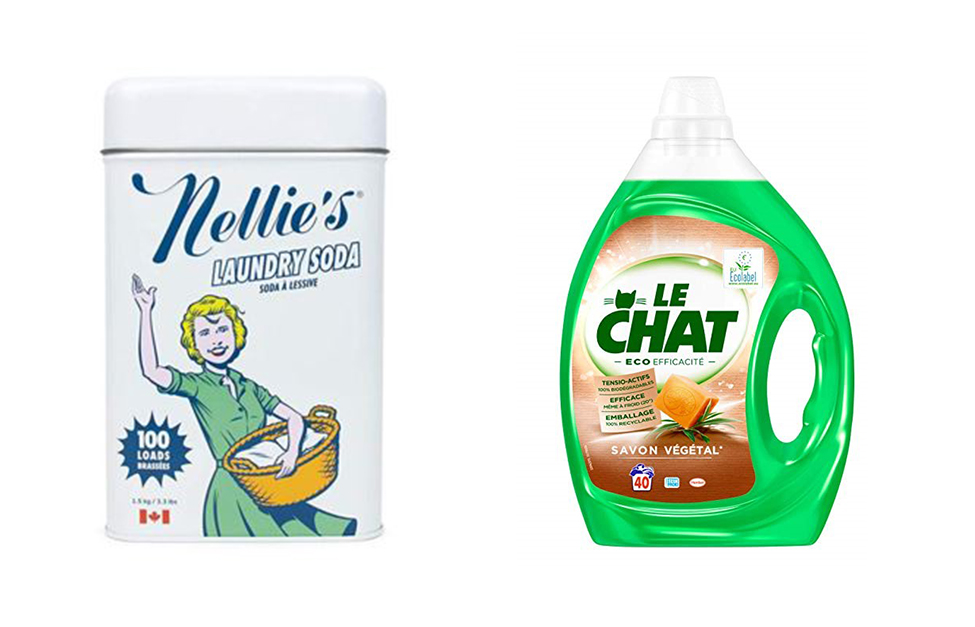
Photo credit: the totally natural powdered laundry of the Canadian brand Nellie’s / Le Chat natural laundry detergent, HENKEL
Another trend is minimalist design. Lines are sleek and simple, lettering is sans-serif and colors are reduced to what’s essential, around white enhanced by one or two colors, a pictogram, a logo – the cleaning product becomes a design object. The lead ingredient that speaks for itself is spotlighted, like Marseille soap, which itself becomes a brand. The packaging alone therefore evokes a world made of what’s pure and natural. The Essential Waitrose or Method brands well understood this and accordingly design their products to appeal to their consumers.
上一篇:The blow-fill-cap block sets foot on the Japanese personal care market
下一篇:How does Serac help Greenfields dairy company to meet its new challenges?